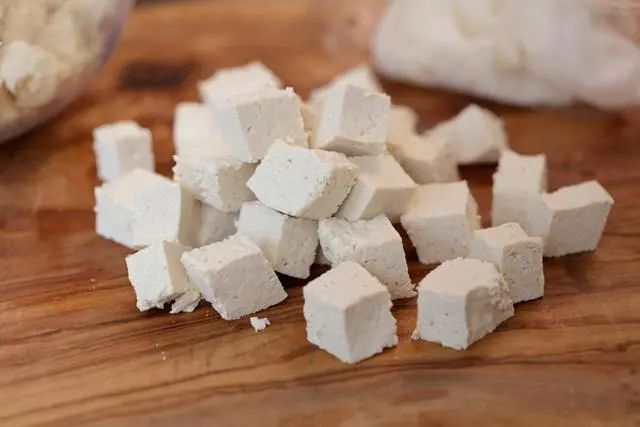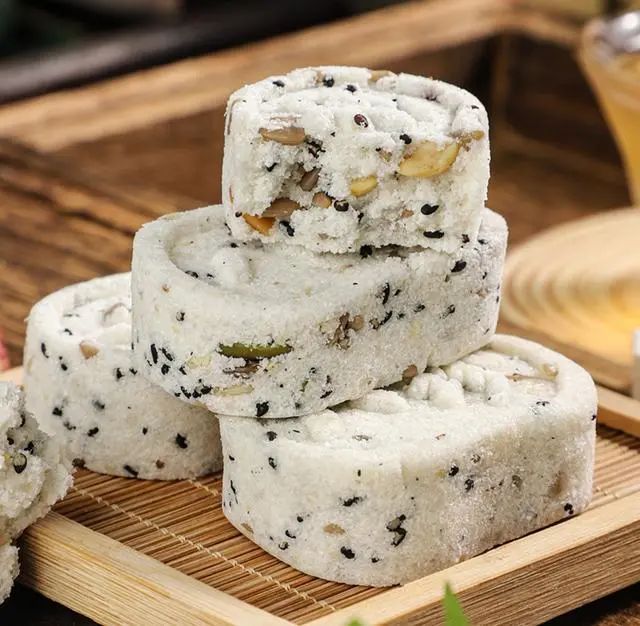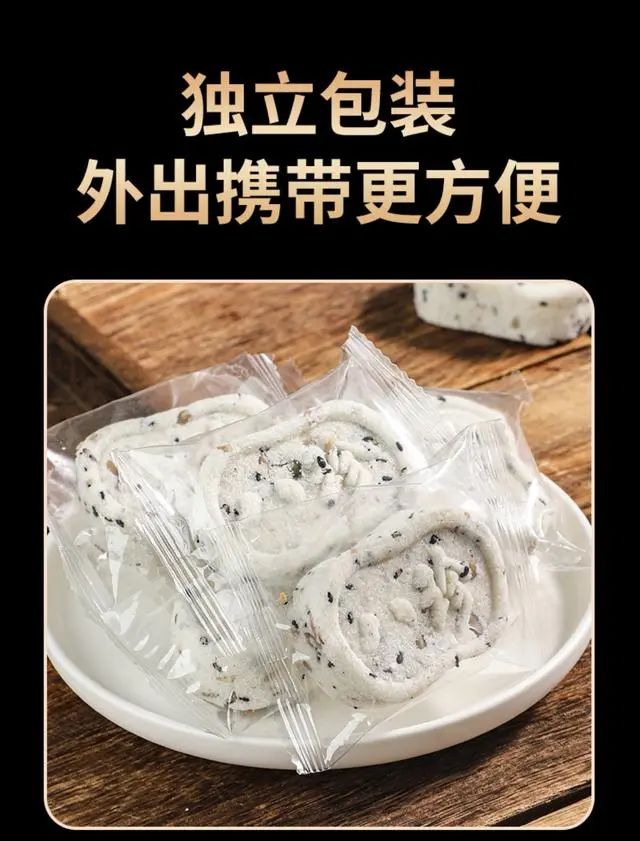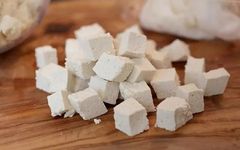Poria, also known as Bai Fu Ling (White Poria), is the dried sclerotium of the fungus Poria cocos from the family Polyporaceae. Its name derives from its morphological characteristics and growth environment. The term “Fu” comes from “Fu” (伏), meaning it grows underground, lurking in the soil like an animal in hibernation; “Ling” refers to its soft texture and porous interior. Poria is sweet, bland, and neutral in nature. It enters the Heart, Lung, Spleen, and Kidney meridians, making it an excellent daily nourishing ingredient. It is particularly mild, neither cold nor hot, and ancient practitioners believed that it is “safe for long-term use” (meaning it has no side effects when consumed over time). Pregnant women, the elderly, and children can consume it daily (in moderation, avoiding excessive intake).

Below, we will detail the nutritional value, efficacy, consumption methods, and precautions of Poria.
1. Nutritional Value
Poria has been regarded as a nourishing tonic since ancient times. It is rich in protein, fat, carbohydrates, minerals, and various vitamins, all of which are essential for the human body. The protein quality in Poria is high, containing essential amino acids that play an important role in enhancing immunity and promoting growth and development. Additionally, the polysaccharides in Poria exhibit various biological activities, including immune regulation and antioxidant effects.
2. Efficacy
1. Promotes urination and drains dampness: Poria can promote urine output and is suitable for edema caused by various reasons.
2. Strengthens the Spleen and harmonizes the Stomach: It enhances Spleen and Stomach function, improves digestion and absorption, and alleviates symptoms such as poor appetite, abdominal distension, and loose stools caused by Spleen and Stomach deficiency, positively impacting digestive health.
3. Calms the mind and settles the spirit: Poria has a calming effect that helps relieve anxiety, irritability, and insomnia, allowing individuals to maintain a good mental state.
4. Enhances immune function: The polysaccharides and other components can regulate the immune system and enhance the body’s resistance.
5. Skin whitening and beautifying:
① Inhibits melanin production: The polyphenolic compounds in Bai Fu Ling can inhibit the activity of tyrosinase, thereby reducing melanin synthesis and decreasing skin pigmentation.
② Promotes skin cell renewal and metabolism: The polysaccharides in Poria can promote the renewal and metabolism of skin cells.
③ Antioxidant effect: The polyphenolic compounds in Bai Fu Ling possess strong antioxidant activity, capable of scavenging free radicals, reducing oxidative damage, and protecting the skin from environmental harm.
3. Consumption Methods
1. Congee: Grind Poria into powder, add it to rice in a pot, and add an appropriate amount of water, cooking until the congee is ready. This Poria congee is not only smooth in texture but also has the effect of strengthening the Spleen and draining dampness, making it an ideal health congee for those with Spleen and Stomach deficiency and excessive dampness.
2. Tea: Slice Poria and place it in a teapot with goji berries and red dates, pour in boiling water, and steep for a few minutes before drinking. This Poria tea is rich in flavor and has the effects of tonifying Qi and nourishing blood, calming the mind, and improving sleep quality, helping to relieve fatigue.
3. Soup: Whether making rib soup, chicken soup, or lean meat soup, adding an appropriate amount of Poria slices can enhance the flavor while also benefiting the Spleen, opening the appetite, and draining dampness.
4. Nut Poria Eight Treasures Cake: This is a traditional Chinese dessert made primarily from nuts, Poria, and other precious ingredients. It has a rich texture and nutritional value, suitable for those with Spleen and Stomach deficiency and malnutrition.
Ingredients for making Nut Poria Eight Treasures Cake:
1. Nuts: Including sunflower seeds, peanuts, black sesame seeds, and pumpkin seeds, which are rich in fats and proteins, providing a rich texture and nutritional value to the cake.
2. Poria: It has the effects of nourishing the heart and calming the spirit, as well as strengthening the Spleen and Stomach. Using Poria powder in the cake can enhance its unique aroma and texture.
3. Other precious ingredients: Yam powder, coix seed powder, fox nut powder, lotus seed powder, lentil powder, malt powder, hawthorn powder, rice flour, and glutinous rice flour to increase the nutritional value, richness, and texture of the cake.

Steps to make Nut Poria Eight Treasures Cake:
1. Prepare ingredients: Gather the required nuts and other ingredients, roast the nuts, and grind the other ingredients into powder.
2. Cake mixture preparation: Mix the powdered ingredients evenly, pour the batter into a steamer, add the prepared nuts, and then add an appropriate amount of water to mix into a batter.
3. Steaming: Place the steamer in a pot and steam on high heat for 20-30 minutes until fully cooked.
4. Slice and enjoy: Remove the steamed cake, let it cool, and cut it into small pieces or thin slices for consumption.

If you find the process of making it too complicated, you can purchase ready-made products, individually packaged for convenience, suitable for both the elderly and children. Eating one or two pieces daily makes nourishing the stomach easy.
4. How to Identify Fake Poria
1. Appearance: Genuine Poria has a uniform color, appearing white or off-white, with slightly yellow edges, a hard texture, and a fine cross-section; fake Poria has uneven color, may have mold spots, a softer texture, and a coarse cross-section.
2. Smell: Genuine Poria has no unusual odor and a pleasant fragrance; fake Poria has a strong, possibly pungent smell.
3. Taste: Genuine Poria has a slight fragrance and is hard to chew; fake Poria is easy to chew and has a bland taste.
4. Water test: Genuine Poria does not dissolve in water and retains its original state after soaking in clean water; fake Poria may dissolve into granules or powder in water.
5. Distinguishing Poria from Earth Poria: Earth Poria and Poria are different ingredients; Earth Poria has a bitter taste, while Poria is sweet and bland.
In daily life, when purchasing Poria, one should choose reputable sources and pay attention to the appearance, smell, and taste of the medicinal material. If necessary, seek professional assistance for identification.
5. Consumption Precautions
1. For individuals with little or no internal dampness: Excessive consumption of Poria may lead to discomfort. This is because the primary function of Poria is to drain dampness; when internal dampness has been regulated or is absent, excessive consumption may disrupt the body’s balance, leading to a series of health issues.
2. Pregnant and breastfeeding women: Should be particularly cautious when consuming Poria. Although Poria is generally safe in moderation for pregnant women and fetuses, it should still be consumed under the guidance of professionals.
3. When taking other medications: It is advisable to avoid consuming Poria or to do so in moderation under professional guidance.
In summary, while Poria has numerous consumption values and efficacy, attention must be paid to certain precautions and considerations during consumption. Only by understanding and following these principles can we fully utilize the value of Poria while avoiding potential risks.

